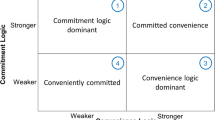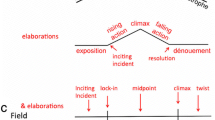Abstract
In light of the recent advancement in economic narrative analysis, we develop a computational textual analysis method to study economic history. In this method, we collect narrative data from newspapers to measure economic trends. In particular, the popularity (frequency) of a narrative (keyword) on the newspapers is used as the proxy of the amount of economic activities associated with the narrative term; a high frequency indicates that there is a high volume of economic activities associated with the narrative term and vice versa. Regularized regression algorithms are then applied on the narrative frequency data to identify narrative terms whose associated microeconomic activities have macroeconomic impact. We apply the method to study a classic topic in Chinese economic history research: U.S. Silver Purchase Act and the Chinese price level in 1928–1936. Our results provide new insights into this controversial subject. For example, we find that the economic activity associated with the narrative term silver stock had no impact on the Chinese price level, which is contrary to previous research on the topic by Friedman and Schwartz [10]. Meanwhile, economic activities associated with the narrative terms U.S. silver purchase act and silver export are found to have a negative impact on the Chinese price level. This suggests the concerns at that time about the effects of U.S. Silver Purchase Act on the Chinese economy were not misplaced.








Similar content being viewed by others
Notes
We obtained the data from the Statistical Monthly (
 ).
).The ShunBao newspaper database is available in many libraries worldwide as scanned files. The digitization of the database was completed by the Beijing Erudition Digital Technology Research Center (
 ), who also made the text data searchable. We accessed the database through the library subscription of Tung Hai University in Taiwan.
), who also made the text data searchable. We accessed the database through the library subscription of Tung Hai University in Taiwan.This is the default setup of the Shanghai ShunBao (
 ) newspaper database.
) newspaper database.Here, we use a Wald test to examine the hypothesis.
Please see [16].
LASSO regression shrinks coefficients to zero, because the two objective terms, the least squared estimation of coefficients and the linear penalty, sometimes interact. The LASSO solution is the first place where the interaction occurs, which corresponds to a zero coefficient.
We made single cv.glmnet run for each model. The \(\lambda \) test sequence is chosen randomly by glmnet. To generate reproducible results, we specified a random number seed at the beginning of each run, so that the \(\lambda \) test sequence is selected deterministically for cross-validation.
The popularity of silver purchase act was at its minimum (zero) over three quarters of the time period. Yet, it is selected as an important feature by the regularized regression algorithms. We surmise that this is because there is a significant correlation between the non-zero “silver purchase act” frequency data and the Shanghai WPI. This correlation outweighs the importance of that of the first 3 quarters of the zero-value data. The same applies to the popularity of “abandonment of the gold standard” data. We will conduct more thorough statistical analysis on this issue in our future work.
References
Baker, S. R., Bloom, N., & Davis, S. J. (2016). Measuring economic policy uncertainty. The quarterly journal of economics,131, 1593–1636.
Blei, D. M. (2012). Probabilistic topic models. Communications of the ACM,55, 77–84.
Brandt, L., & Sargent, T. J. (1989). Interpreting new evidence about china and u.s. silver purchases. Journal of Monetary Economics,23, 31–51.
Burdekin, R. C. (2008). Us pressure on china: Silver flows, deflation, and the 1934 shanghai credit crunch. China Economic Review,19, 170–182.
Choi, H., & Varian, H. (2012). Predicting the present with google trends. Economic Record,88, 2–9.
Escalas, J. E. (2007). Self-referencing and persuasion: Narrative transportation versus analytical elaboration. Journal of Consumer Research,33(4), 421–429.
Farmer, J. D. (2012). Economics needs to treat the economy as a complex system. Presented at the INET Conference Rethinking Economics and Politics.
Friedman, J., Hastie, T., & Tibshirani, R. (2010). Regularization paths for generalized linear models via coordinate descent. Journal of statistical software,33, 1–22.
Friedman, M. (1992). Franklin d. roosevelt, silver, and china. Journal of Political Economy,100(1), 62–83.
Friedman, M., & Schwartz, A. J. (1963). A monetary history of the United States, 1867–1960. Princeton: Princeton University Press.
Giannone, D., Reichlin, L., & Small, D. (2008). Nowcasting: The realtime informational content of macroeconomic data. Journal of Monetary Economics,55, 665–676.
Granger, C. W. (1969). Investigating causal relations by econometric models and cross-spectral methods. Econometrica,37, 424–438.
Ho, T.-K., & Lai, C.-C. (2013). Silver fetters? the rise and fall of the chinese price level 1928–34. Explorations in Economic History,50(3), 446–462.
Kreps, T. (1934). The price of silver and chinese purchasing power. Quarterly Journal of Economics,48(2), 245–287.
Levenberg, A., Pulman, S., Moilanen, K., Simpson, E., & Roberts, S. (2014). Predicting economic indicators from web text using sentiment composition. International Journal of Computer and Communication Engineering,3(2), 109–115.
Lütkepohl, H. (2005). New introduction to multiple time series analysis. Berlin: Springer Science & Business Media.
Machill, M., Köhler, S., & Waldhauser, M. (2007). The use of narrative structures in television news. European Journal of Communication,22(2), 185–205.
McQuiggan, S. W., Rowe, J. P., Lee, S., & Lester, J. C. (2008). Story-based learning: The impact of narrative on learning experiences and outcomes. In Intelligent Tutoring Systems. Springer.
Nyman, R., Kapadia, S., Tuckett, D., Gregory, D., Ormerod, P., & Smith, R. (2018). News and narratives in financial systems: exploiting big data for systemic risk assessment. Bank of England Working Paper 704.
Rawski, T. G. (1989). Economic growth in prewar China. California: University of California Press.
Sharpe, S. A., Sinha, N. R., & Hollrah, C. (2017). What’s the story? a new perspective on the value of economic forecasts. FEDS Working Paper.
Shiller, R. J. (2017). Narrative economics. American Economic Review,107(4), 967–1004.
Sims, C. A. (1980). Macroeconomics and reality. Econometrica,48, 1–48.
Slater, M. D., Buller, D. B., Waters, E., Archibeque, M., & LeBlanc, M. (2003). A test of conversational and testimonial messages versus didactic presentations of nutrition information. Journal of Nutrition Education Behavior,35, 255–259.
Tang, L. L. (1936). China’s new currency system. Shanghai: China United Press. US Bureau of Labor Statistics (http://www.bls.gov).
Tetlock, P. C. (2007). Giving content to investor sentiment: The role of media in the stock market. The Journal of finance,62(3), 1139–1168.
Tibshirani, R. (1996). Regression shrinkage and selection via the lasso. Journal of the Royal Statistical Society: Series B (Methodological),58(1), 267–288.
Tuckett, D., & Nikolic, M. (2017). The role of conviction and narrative in decision-making under radical uncertainty. Theory & psychology,27(4), 501–523.
Weber, K., Martin, M. M., Members, O. C., & Corrigan, M. (2006). Creating persuasive messages advocating organ donation. Communication Quarterly,54(1), 67–87.
Yeh, K. C. (1979). China’s national income, 1931–36. Modern Chinese Economic History (pp. 95–128).
Zou, H., & Hastie, T. (2005). Regularization and variable selection via the elastic net. Journal of the royal statistical society: series B (statistical methodology), 67(2), 301–320.
Acknowledgements
We would like to thank the two anonymous reviewers, whose constructive comments have helped improving this paper. This work is supported by the Ministry of Science and Technology (MOST) Taiwan under the Grant number 106-2410-H-004 -006-MY2.
Author information
Authors and Affiliations
Corresponding author
Additional information
Publisher's Note
Springer Nature remains neutral with regard to jurisdictional claims in published maps and institutional affiliations.
Rights and permissions
About this article
Cite this article
Hsu, C., Yu, T. & Chen, SH. Narrative economics using textual analysis of newspaper data: new insights into the U.S. Silver Purchase Act and Chinese price level in 1928–1936. J Comput Soc Sc 4, 761–785 (2021). https://doi.org/10.1007/s42001-021-00104-0
Received:
Accepted:
Published:
Issue Date:
DOI: https://doi.org/10.1007/s42001-021-00104-0





 ).
). ), who also made the text data searchable. We accessed the database through the library subscription of Tung Hai University in Taiwan.
), who also made the text data searchable. We accessed the database through the library subscription of Tung Hai University in Taiwan. ) newspaper database.
) newspaper database.